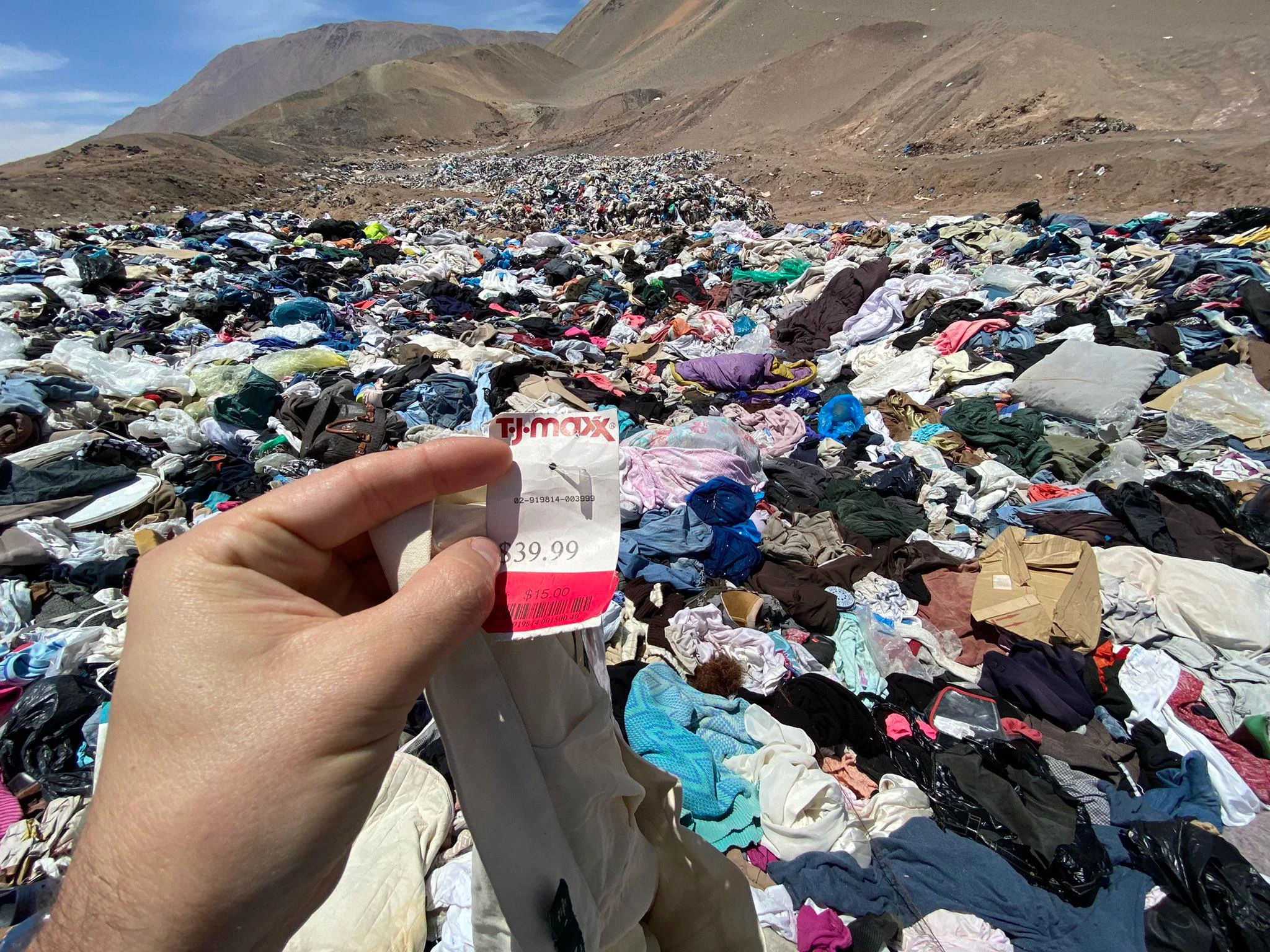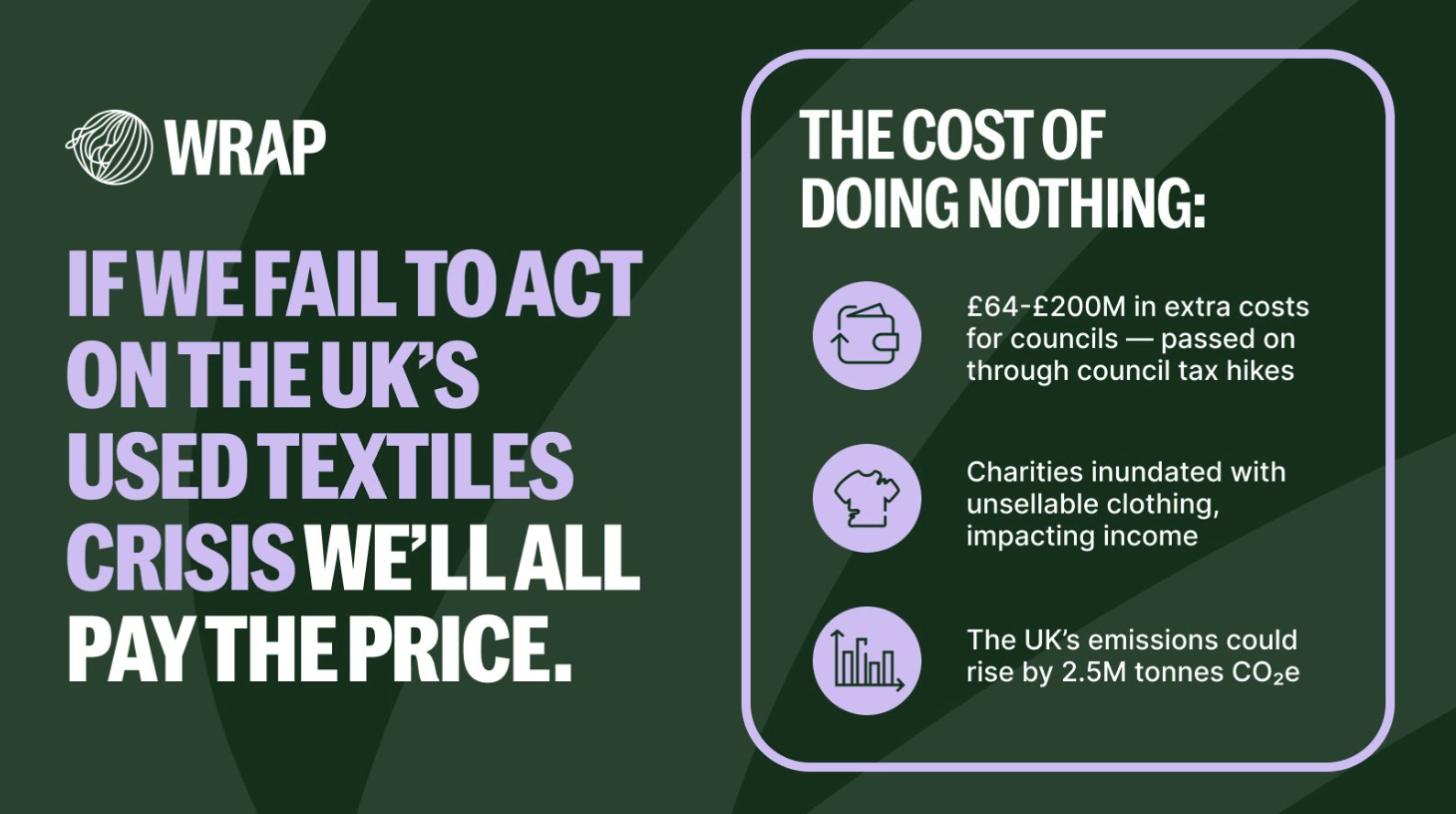
Imagine standing in the middle of a desert, surrounded by mountains—not of sand, but of clothes. Fast fashion, forgotten donations, discarded trends. Welcome to the Atacama Desert, a dumping ground for the world’s cast-offs. Now imagine this crisis hitting closer to home—because it already is.
The UK is on the brink of a textile waste meltdown. And unless we change course, the whole recycling system could unravel, leaving us buried under our own wardrobes.
A Perfect Storm in the Making
Each year in the UK, we collect 620,000 tonnes of used textiles. Sixty percent of that is exported. Most of this clothing is collected by charities—through high street shops, doorstep donation bags, and over 8,000 clothing banks run by groups like the Salvation Army, who alone handle over 60,000 tonnes annually.
This system made sense back when clothes were durable and resaleable. But the era of fast fashion has changed everything. Now, cheap, low-quality garments flood donation bins faster than they can be processed. What was once a valuable resource has become a mounting problem.
Resale Apps and a Shrinking Supply of Quality Donations
Platforms like Vinted, with 18 million users in the UK, have transformed how we think about unwanted clothing. People now sell their best items online—leaving charity shops with the leftovers.
Charity staff are overwhelmed. They spend hours sorting through mountains of donations, much of which is unsellable. The result? Higher costs, lower revenue, and fewer good-quality clothes to put on racks. Add rising operational costs, and the pressure becomes unbearable.
The Textile Recycling Association has issued stark warnings: our system is at breaking point.
As Julia Roebuck from Thread Republic put it:
“As more charity retail stores stop taking clothing and household textiles due to lack of capacity from sorters and exporters, it will be local authorities picking up the bill.”
Global Markets Are Closing Their Doors
Countries in Africa and the Middle East—once destinations for our secondhand exports—are tightening their borders with new textile waste policies and tariffs. Even European countries are following suit. The message is clear: we need to deal with our own mess.

The Cost of Doing Nothing
Right now, collectors and sorters spend £88 million a year processing the UK’s unwanted textiles. WRAP estimates that if we don’t act, local councils could be forced to spend an additional £64 million, rising to £200 million by 2035. And all that waste? It could generate an extra 2.5 million tonnes of CO2e.
So What’s the Fix?
WRAP’s ACT project suggests a smart, scalable solution: building 14 Advanced Textile Sorting and Preprocessing Facilities across the UK. These would divert reusable textiles from waste streams, potentially halving processing costs.
But infrastructure alone isn’t enough. We need bold policy. That means Extended Producer Responsibility (EPR) for textiles—a ‘polluter pays’ system that holds fashion brands accountable and channels funding toward sustainable solutions.
Let’s Mend the System—Literally
One of the most powerful ways to fight textile waste is simply to repair our clothes. My own PhD research focuses on clothing repair and mending practices. If you’re interested, read my blog on mending here, watch my research presentation here, or check out my research poster here.
The bottom line? The textile flood is no longer a distant threat. It’s rising fast, and we all have a role to play—whether it’s mending a tear, supporting policy change, or rethinking the way we shop. Let’s act before we’re truly drowning in fashion waste.

Leave a Reply